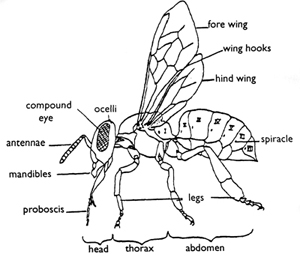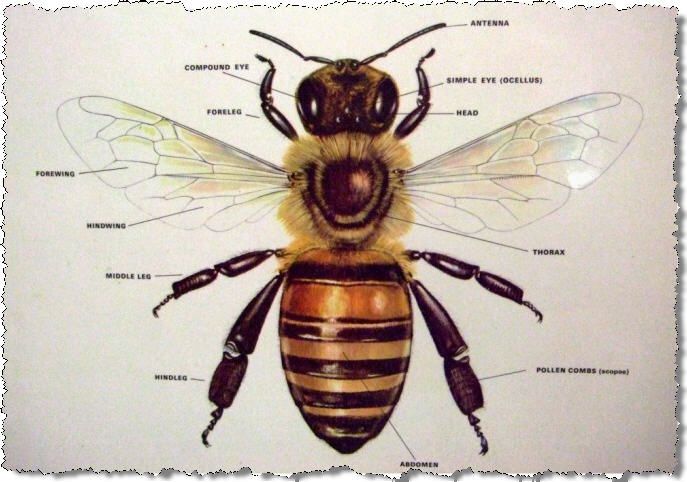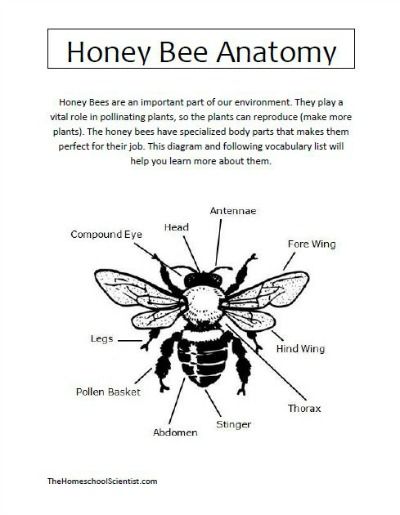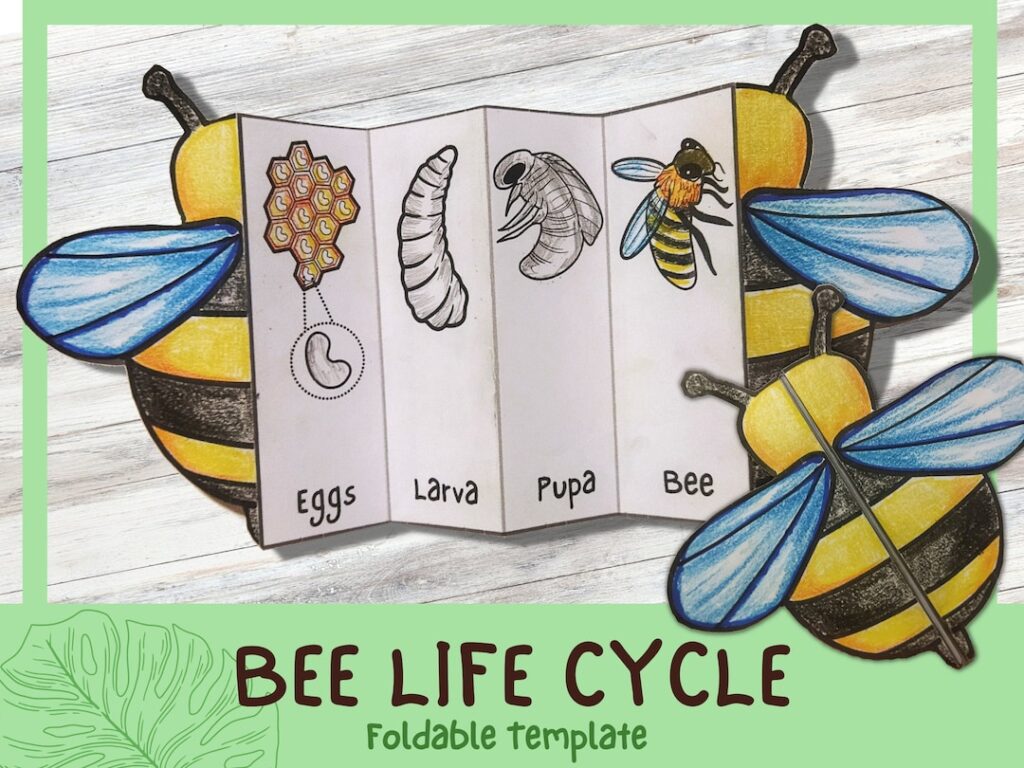
Have you ever stopped to marvel at the intricate design of a bee’s body? From their delicate wings to their complex compound eyes, every aspect is a testament to the brilliance of nature. In this article, we will delve into the fascinating world of bees, exploring their body blueprint and gaining a deeper understanding of how these incredible creatures are perfectly adapted for their buzzing existence. So, sit back and prepare to be amazed by the wonders of the bee’s intricate design.
The Bee’s Body Blueprint
Bees are fascinating creatures, renowned for their incredible work ethic and vital role in pollination. To truly comprehend their astounding abilities, it is important to understand the intricate design of their body blueprint. From their exoskeleton to their stinger, each part of a bee’s body serves a specific purpose in its survival and contribution to the ecosystem. Let’s explore the various components of a bee’s body and unravel the marvels of their anatomy.
The Exoskeleton: A Protective Shell
At a first glance, a bee’s exoskeleton appears as a hard shell encasing its body. Composed mainly of chitin, a tough and flexible substance, the exoskeleton provides protection against external elements and predators. Additionally, it serves as a support structure for the bee’s body, safeguarding its internal organs from potential harm.
The exoskeleton is not a rigid shell but rather a flexible suit of armor that allows the bee to move with agility and precision. This versatility is due to the exoskeleton’s jointed structure, which accommodates the bee’s complex movements. As the bee grows, it periodically sheds its exoskeleton in a process called molting, allowing for growth and development.
The Head: Command Center of the Bee
Situated at the front of the bee’s body, the head acts as the command center, directing the bee’s every move. It houses several crucial components that contribute to a bee’s survival and communication abilities. The head is home to the bee’s brain, which coordinates its activities and processes sensory information.
In addition to its vital role in controlling the bee’s movements, the head is also responsible for communication within the colony. The bee’s head contains specialized glands that produce pheromones, chemical signals used for intraspecies communication. These pheromones are essential for coordinating activities such as foraging, defense, and reproduction.

This image is property of bee-health.extension.org.
The Compound Eyes: The Bee’s Visual System
Bees are renowned for their remarkable eyesight, which helps them navigate complex environments and locate food sources. Their eyes comprise thousands of tiny hexagonal lenses called ommatidia, collectively known as compound eyes. These compound eyes offer a panoramic view of the surroundings, allowing bees to detect movement and perceive shapes and colors.
The compound eyes provide bees with multiple advantages, including the ability to detect ultraviolet light, which is invisible to humans. This enables them to locate nectar-rich flowers by recognizing patterns in the ultraviolet spectrum. However, their visual system also has limitations, such as a limited ability to focus on objects and a reduced depth perception.
The Antennae: Sensory Organs of the Bee
The antennae play a vital role in a bee’s sensory perception and communication. Located on the bee’s head, these slender appendages are equipped with sensory receptors that detect various environmental cues. Bees possess two types of antennae: the longer, more prominent antennae of the females (queens) and worker bees, and the shorter antennae of the male bees (drones).
The antennae serve as highly sensitive organs that allow bees to sense chemicals in the air, including pheromones released by other bees. Through their antennae, bees can detect subtle variations in scent, helping them communicate within the colony and recognize their nestmates. Additionally, the antennae enable bees to navigate through their environment, perceiving changes in temperature, humidity, and airflow.

This image is property of Amazon.com.
The Mouthparts: Essential Tools for Survival
Bees’ mouthparts are perfectly adapted for their specialized diet of nectar and pollen. These essential tools consist of several components, including the mandibles, the maxillae, and the proboscis or tongue.
The mandibles are strong jaws that enable bees to gather materials for nest construction and defend the colony against intruders. The maxillae complement the mandibles, aiding in the manipulation of pollen and the consumption of liquid food. However, the most remarkable feature of a bee’s mouthparts is the proboscis, a long, tube-like structure that allows bees to extract nectar from flowers.
When not in use, the proboscis remains coiled beneath the bee’s head. However, when a bee encounters a flower, it extends its proboscis to access the sugary nectar within. This ingenious adaptation ensures that bees can efficiently collect nectar from flowers, benefiting both the bees and the plants they pollinate.
The Thorax: Powerhouse of the Bee
The thorax, located between the head and the abdomen, serves as the powerhouse of a bee’s body. This segment contains vital organs, including the muscles responsible for flight and the coordination of wing movements. Additionally, the thorax houses the bee’s respiratory system, allowing it to exchange gases with the surrounding environment.
The thorax is equipped with powerful flight muscles that enable bees to tirelessly navigate their surroundings. These muscles contract and relax rapidly, generating the necessary force to beat the wings and sustain flight. Remarkably, a bee can beat its wings up to 200 times per second, allowing it to hover, maneuver, and fly at impressive speeds.
Furthermore, the thorax plays a crucial role in thermoregulation. Bees are ectothermic, meaning they depend on external heat sources to maintain their body temperature. The thorax contains specialized muscles that generate heat, allowing bees to warm themselves and sustain their metabolic activities even in cooler weather.

This image is property of i.pinimg.com.
The Wings: Aerial Navigation and Pollination
Bees’ wings are not merely tools for flight; they also play a pivotal role in pollination, a process essential for the reproductive success of flowering plants. A bee’s wings are thin, translucent, and delicately veined, allowing for efficient flight and precise control of movement.
The intricate anatomy and structure of a bee’s wings enable them to perform complex aerial maneuvers. The wings’ veins provide strength and stability, while their flexibility and slight curvature generate lift during flight. Bees can adjust the angle and amplitude of their wing beats to achieve various forms of flight, such as hovering, forward flight, and even backward flight.
In addition to their pivotal role in flight, bees’ wings facilitate pollination. As bees visit flowers to collect nectar and pollen, grains of pollen adhere to the tiny hairs on their bodies, including the wings. As the bee moves from flower to flower, some of the pollen is transferred, resulting in the pollination of plants and the subsequent production of fruits and seeds.
The Legs: Multifunctional Tools for the Bee
Bees’ legs are marvels of versatility, serving multiple purposes essential for their survival and reproductive success. Each leg consists of several segments, each with a distinct function.
The legs play a crucial role in collecting pollen, aiding in the process of pollination. Bees possess specialized structures on their hind legs called pollen baskets or corbiculae. These concave areas are lined with tiny hairs, allowing the bee to collect and transport pollen back to the colony efficiently. This task is particularly crucial for worker bees responsible for ensuring the colony’s food supply.
Additionally, the legs facilitate the building of the bee’s nest. By collecting resin or propolis, a sticky substance obtained from plants, bees can strengthen the structural integrity of their hives. The legs also serve as tools for grooming, allowing bees to clean their antennae, wings, and body.

This image is property of i.pinimg.com.
The Abdomen: Home to Vital Bee Organs
The abdomen, the posterior segment of a bee’s body, houses several vital organs crucial for its survival and reproduction. These include the heart, digestive system, reproductive organs, and the honey stomach.
The heart is a muscular organ that pumps hemolymph, the bee’s circulatory fluid, throughout its body. The digestive system processes the food consumed by the bee, converting nectar and pollen into essential nutrients. The reproductive organs play a crucial role in the mating process, ensuring the continuation of the bee population.
Perhaps the most well-known feature of a bee’s abdomen is its honey stomach, a sac-like extension of the digestive system. This specialized organ allows bees to collect and store nectar, which will later be converted into honey. The honey stomach acts as a temporary storage compartment, enabling bees to transport nectar back to the hive for the production of this precious food source.
The Stinger: Defense Mechanism of the Bee
A bee’s stinger is a potent defense mechanism, and it is primarily found in female bees, including worker bees and queens. Located at the end of the abdomen, the stinger consists of a barbed structure connected to venom sacs.
When threatened or provoked, a bee will use its stinger as a weapon. When the stinger penetrates an enemy’s skin, the barbs on the stinger become embedded, preventing the bee from retrieving it. As the bee attempts to withdraw, the stinger tears from its body, causing significant injury and ultimately leading to the bee’s death.
The venom contained within the stinger serves to paralyze the attacker or predator, acting as a deterrent and protecting the bee and its colony. However, it is important to note that bees will only sting in self-defense, and their primary goal is to ensure the survival of the colony.
In conclusion, the intricate design of a bee’s body blueprint is a testament to the remarkable adaptations and specialized structures that enable these industrious creatures to thrive. From their exoskeleton to their stinger, each aspect of a bee’s anatomy serves a vital purpose, contributing to their remarkable abilities as pollinators, communicators, and architects of their colonies. By understanding and appreciating the intricacies of their body blueprint, we gain a deeper appreciation for the incredible world of bees and the indispensable role they play in our ecosystem.

This image is property of i.etsystatic.com.